by Paul Donnelly
Powerhouse Museum Curator, Design and Society
and Archaeologist
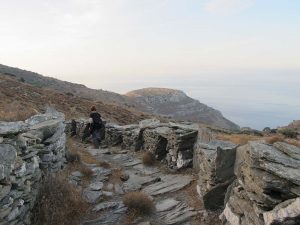
The ingenuity of these walls is found in their response to the availability and nature of local materials – in this case schist stone – which is formed in layers and splits into thin sheets. These can be very large sheets and in the making of the field walls a large (often triangular-shaped) schist slab was inserted into the ground every two metres or so standing upright horizontal to the wall and boxed in by (often two) smaller slabs placed across each edge.
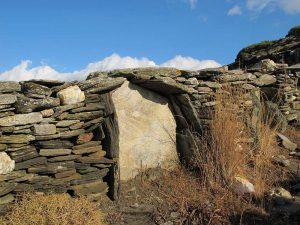
The effect is very distinctive and their beauty changes with the passing of the day and its changing light: Early in the morning or late in the day the shiny nature of the vertical schist slabs reflect the sun in ways that resemble garlands of giant necklaces draped over the shoulders of the hills.
Making walls in this manner must have saved around a third of the time it would take to make a full dry-stone wall, and further time was saved in not having to gather and transport the smaller stones that would have been required in place of the vertical slabs. As the Zagora team found to their cost however, using vertical slabs wasn’t all plain sailing: the lifting of a large schist slab to form a table in the dig HQ took six archaeologists to move it!
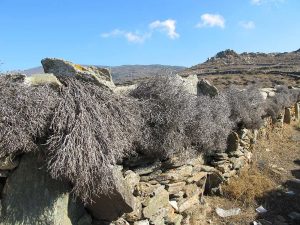
It is sobering to realise the use of schist stems from Andros’s deep ancient past. The walls of the Early Iron Age buildings of Zagora extending back to at least 850 BCE were made of layers of schist, while the square altar of the Zagora temple is composed from slabs of schist laid on their sides, 2700 years ago.
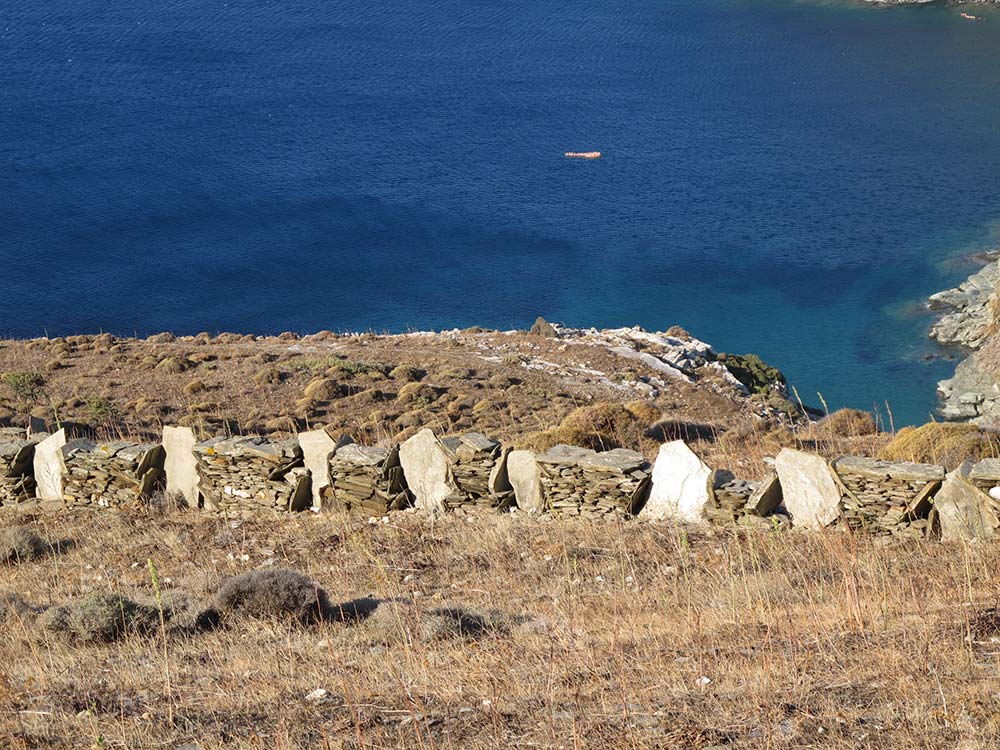
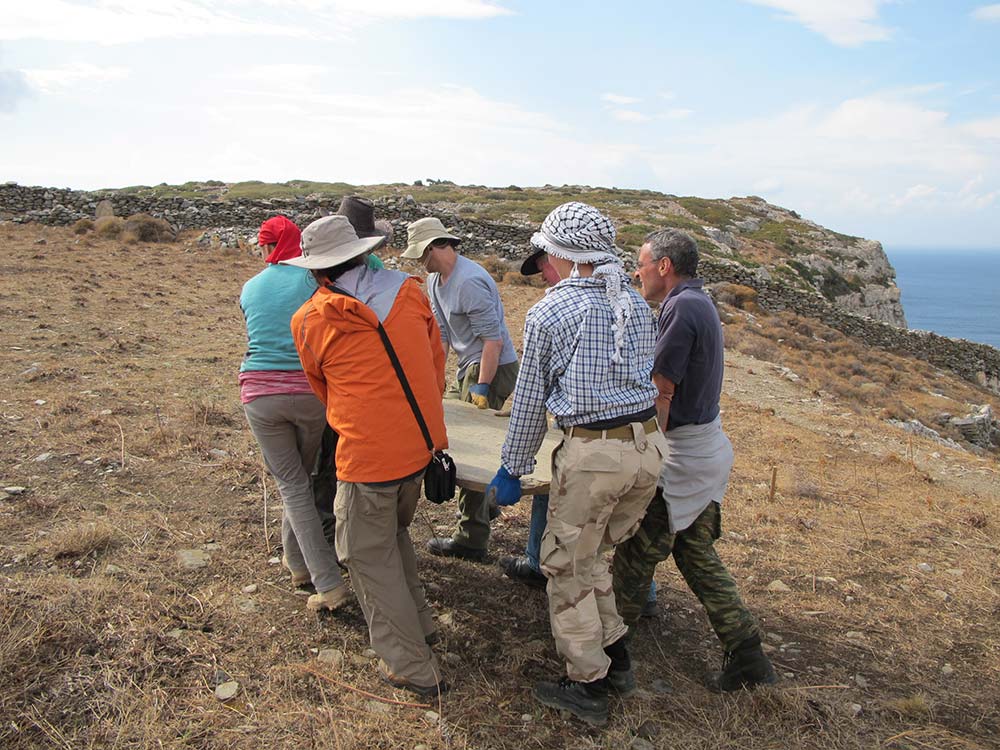
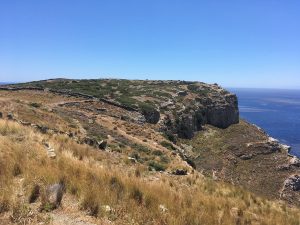
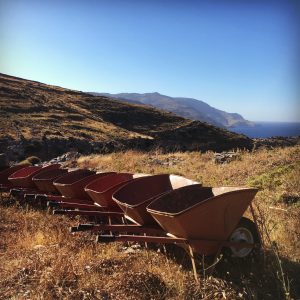




2 thoughts on “Traditional schist field walls of Andros”
http://www.andros365.gr/themata/zagora-archeological-site
Really enjoying your architectural and structural musings, Paul.